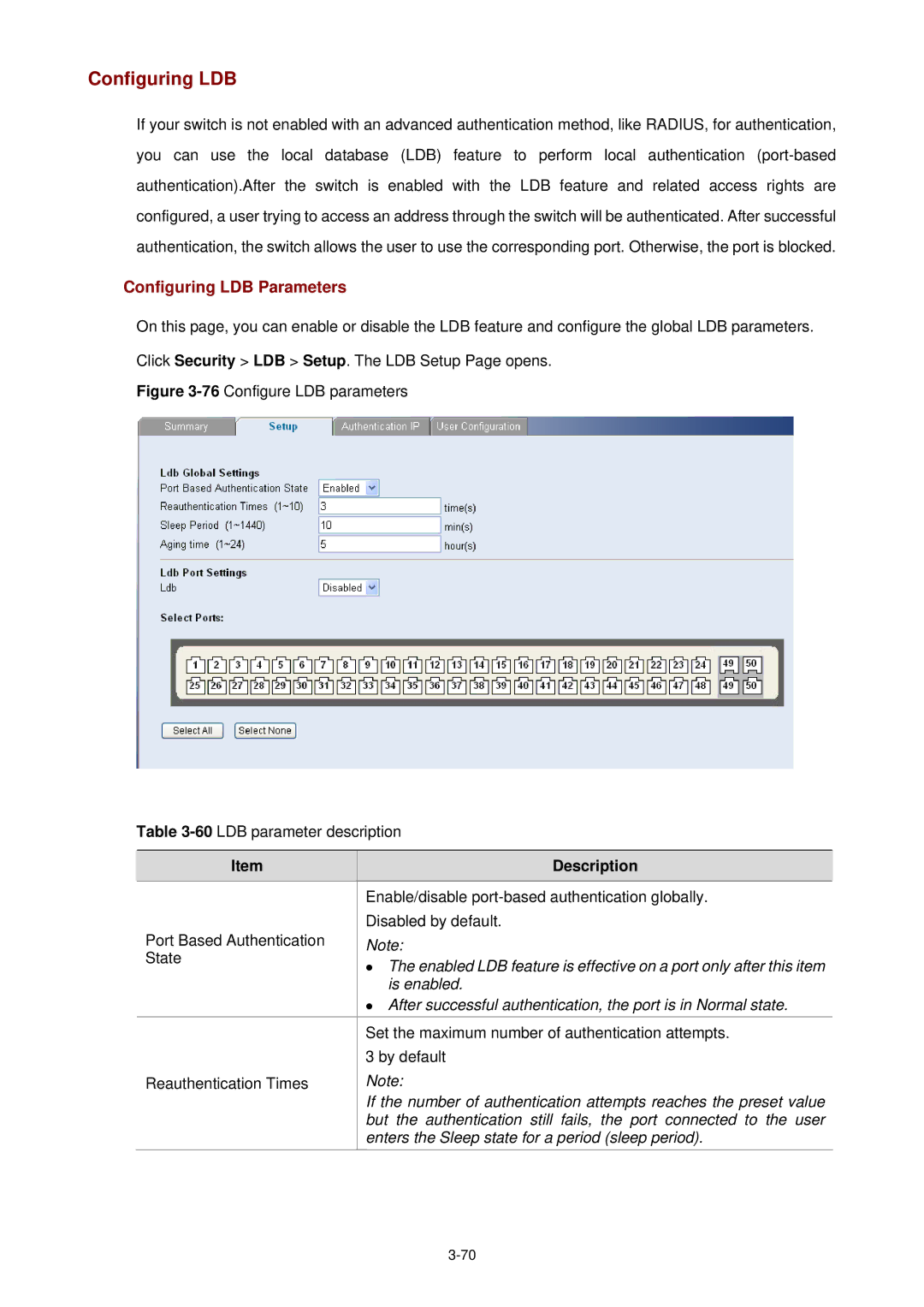
Configuring LDB
If your switch is not enabled with an advanced authentication method, like RADIUS, for authentication,
you can use the local database (LDB) feature to perform local authentication
authentication).After the switch is enabled with the LDB feature and related access rights are
configured, a user trying to access an address through the switch will be authenticated. After successful
authentication, the switch allows the user to use the corresponding port. Otherwise, the port is blocked.
Configuring LDB Parameters
On this page, you can enable or disable the LDB feature and configure the global LDB parameters.
Click Security > LDB > Setup. The LDB Setup Page opens.
Figure 3-76 Configure LDB parameters
Table 3-60 LDB parameter description
Item | Description |
| Enable/disable |
Port Based Authentication | Disabled by default. |
Note: | |
State | z The enabled LDB feature is effective on a port only after this item |
| |
| is enabled. |
| z After successful authentication, the port is in Normal state. |
| Set the maximum number of authentication attempts. |
| 3 by default |
Reauthentication Times | Note: |
| If the number of authentication attempts reaches the preset value |
| but the authentication still fails, the port connected to the user |
| enters the Sleep state for a period (sleep period). |
